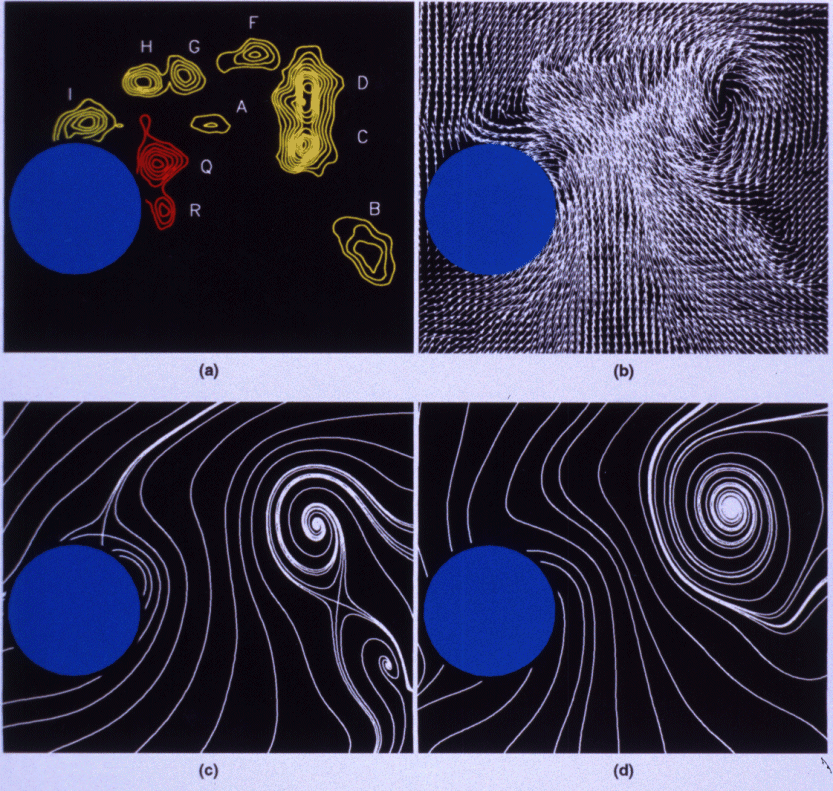You are here
Home ›Vortex formation from an oscillating cylinder in quiescent fluid.
Vortex formation from an oscillating cylinder in quiescent fluid. Sinusoidal motion of the cylinder in the horizontal direction sheds small-scale concentrations of vorticity from its upper surface and its base. This process contrasts with the classical view of a thin, continuous seoparated layer of vorticity feeding into a single, large-scale vortex. As shown, two of the adjacent concetrations, C and D, agglomerate to form a larger-scale concentration, CD. The sum of the values of circulation of the remaining concentrations of vorticity, B, F, G, H, and I, is, however, three-fourths that of the agglomerated vortex CD. Moreover, the agglomeration QR has a circulation one-third that of CD. The corresponding velocity field in the laboratory frame, shown in the image at the upper right, indicates the existence of ony vortex CD, as does the streamline pattern in the image at the lower right, which is typically deduced from traditional particle streak visualization. The streamline pattern in a reference frame moving with the cylinder, given in the image at the lower left, suggests only concentrations CD and B. The Deulegan-Carpenter number, KC = 2(pi)A/D = 10, in which A is the amplitude of the sinusoidal motion and D is the cylinder diameter. The dimensionless frequency fD2/v = 378 and Re = 3,780 [15].

